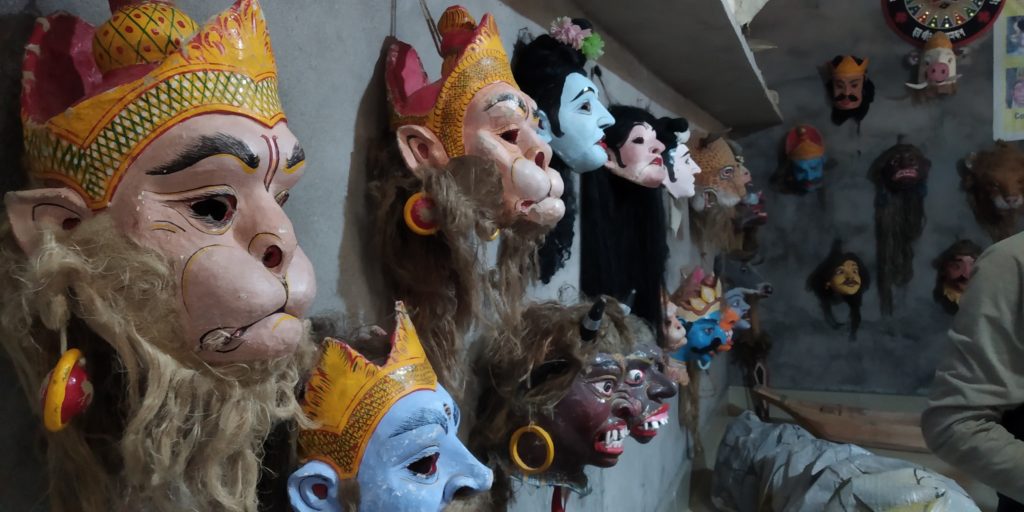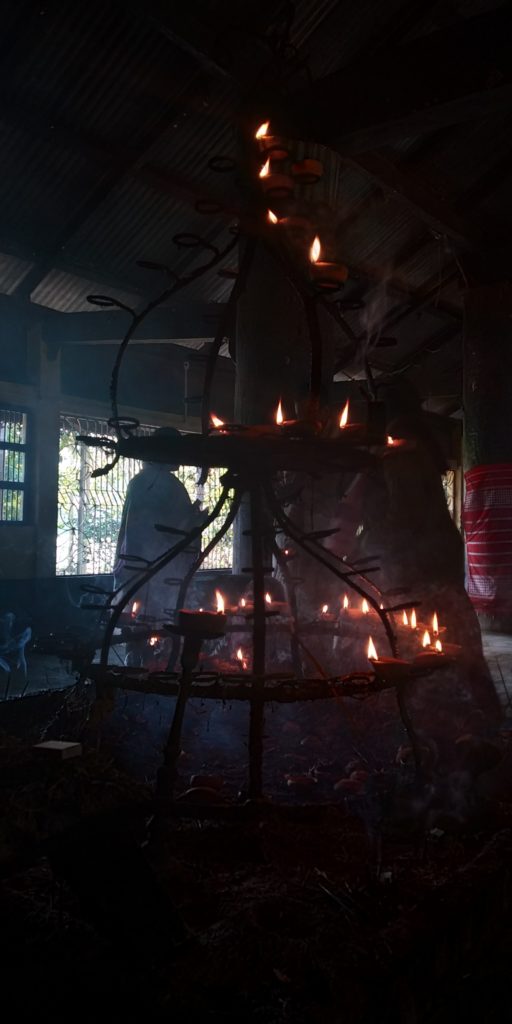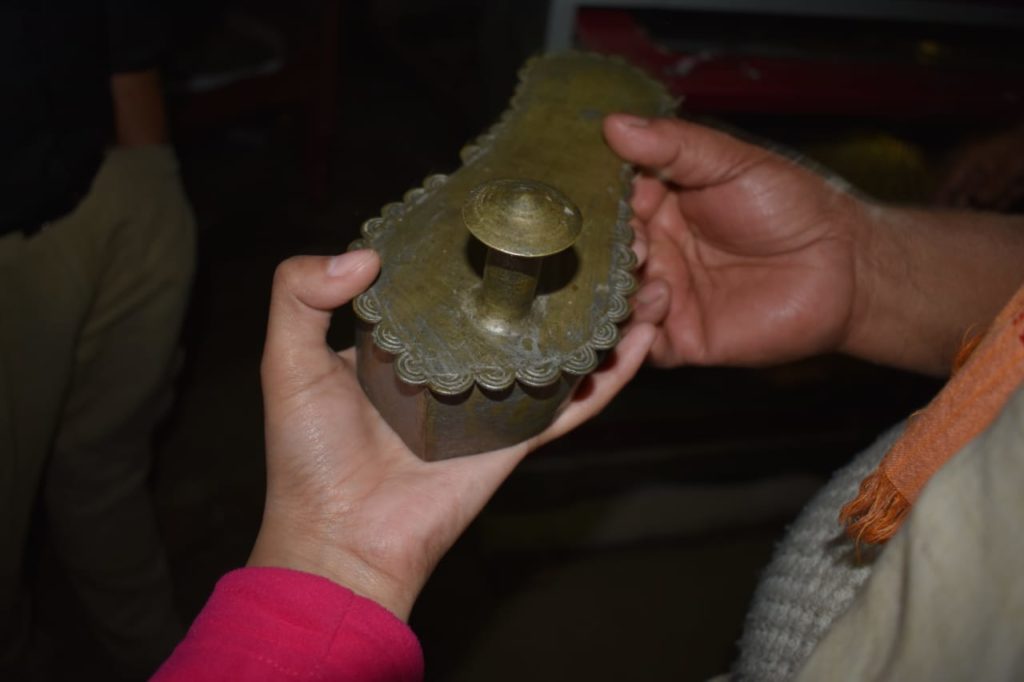
Assam, a state in the north-east of India, is known for its breath-taking landscape and its rich, hybrid culture. Be it the Brahmaputra, the famous Kamakhya temple, the stories of magic and witchcraft, the Bihu, the Kaziranga stretch or the tea gardens, everything gives you a resplendent cross-section of the diverse shades that constitute Assam’s history, heritage and natural resources. I recently had the opportunity to visit this magnificent state. While I was making the most of my journey, a thought kept striking my mind concerning how neglected Assam is, despite being blessed with so much. Be it with respect to the education system or awareness about its significance, it largely remains a cornered state. Thus, I take this opportunity to discuss Assam and one particular feature of its vibrant socio-cultural milieu.
Today, Assam’s major cultural and religious practices are products of the Vaishnavite movement which was prevalent since the medieval period (the last decade of the 15th century). Significant credit goes to Srimanta Sankaradeva who was a polymath– a socio-religious reformer, a saint, a poet. He inspired the Bhakti Movement in Assam and preached pure devotion to Krishna. The movement’s impact on religion, literature, fine arts, and the social life of Assam is remarkable, and the overwhelming imprint of this phase, akin to a Renaissance of sorts, cannot be understated. Although the Vaishnava movement in Assam was almost similar to what sprang up in other parts of the country around the same time, the application of the principles and teachings came out differently in this land. What makes Vaishnavism of Assam remarkable is the installation of the ‘Satra’ institution.

Established by Sankaradeva and his followers, Satras are institutional centres, like Buddhist Monasteries and Mathas of medieval India, and were concerned with the spreading and devotional practices of neo-Vaishnavism, especially Sankaradeva’s Ekasarana Dharma. However, the satras of Assam don’t just deal with devotion alone but also focus on the literary and artistic aspects which Sankaradeva passed on as a legacy to Assam’s people. They are also treasure troves of cultural artefacts – some of the satras contain mini-museums inside them and store objects from the Ahom kingdom. Satras grew rapidly during Ahom rule and since then, the culture emanating from them has become an integral part of Assam’s life, playing a significant role in developing Assam’s present cultural fabric. Although there are hundreds of satras in Assam, the most influential ones are on the island of Majuli.
Majuli is the biggest river island in the world, in the Brahmaputra River, and has been the nucleus of the neo-Vaishnavite culture. It is 20 km away from Jorhat (upper Assam) and one can only reach the island by taking the ferry from Jorhat. It shelters the most affluent satras of Assam like Auniati Satra, Dakhinpat Satra, Garmur Satra, Kuruabahi Satra and Kamalabari Satra. Each satra has a Naamghar or Kirtanghar and a Manikuta and two or four rows of Hatis. The naamghar is a space where all the main religious activities are carried out. It is usually a large open space with multiple doors and windows and people pray here, as well as indulge in religious discussions and recite passages from the Holy Scriptures. The manikuta is a smaller structure attached to the naamghar where the idol of the deity or the Holy Scripture is kept. Upon seeing the manikuta of one such satra, I approached one of the senior priests of the institution to enquire about why, despite the satras following the monotheistic Ekasarana path of Sankaradeva, an idol resides here. He explained that even though the satra doesn’t encourage idol worship, the motive behind their installation is to attract more people towards the satras so that they spend more time here, remain attached to their culture and pay their respects to the institution. As already mentioned, there are also two or four rows of hatis where the bhakts reside. Each satra consists of different principal parties:

1) Adhikara
2) Deka-adhikara
3) Bhakt
4) Sisya
The first three parties live a monastic life within the satra while the fourth one leads a householder’s existence outside the satra. We also found out that one can admit themselves anytime in the institution and can leave the satra if they so will. The priest confirmed that while different satras have different principles, each one of them hold equal respect in religious and cultural matters.
Many of the satras are involved in performing arts. Musical art and musical performance form an integral part of the satras. People sing hymns and perform them in the naamghar to the beats of big drums and other musical instruments. The Vaishnav music of Assam, like Assam Borgeet, Ankiya Geet, Hiya Naam and Deeha Naam are very popular and prevalent even today in Majuli’s Satras. These songs are mainly concerned with the life of Krishna and usually don’t mention Radha (Krishna’s legendary lover) at all, a departure from the general Bhakti trends.
The Majuli satras also involve themselves in different sorts of art and craft activities. For instance, mask-making is one of the most famous traditional crafts of the region in which many, though not all, satras of Majuli participate. Chamaguri Satra is where this art has truly been kept alive. Interestingly, these crafts are carried out by the bhakts of the satras. They make masks of mythological characters from the Ramayana and the Mahabharata. These masks are used in traditional theatres called Bhaona and in dance performances in the villages. One of the skilled mask makers of Chamaguri Satra informs us that they have even performed internationally and many foreigners come here to learn the art of mask-making. Satras also participate in various other festivities associated with Krishna, Bihu, and so on.

One can claim that the satras are the nerve centres of Assam’s cultural and religious activities, an integral part of Assam’s society and its conscience. This was altogether a different cult which Sankaradeva had propagated and sown in Assam’s fertile soil all those centuries ago. A lot has been changed with time but people are still emotionally attached to their cultural heritage and want to pass on this legacy to the coming generations.
Writer: Parvinder Kaur

